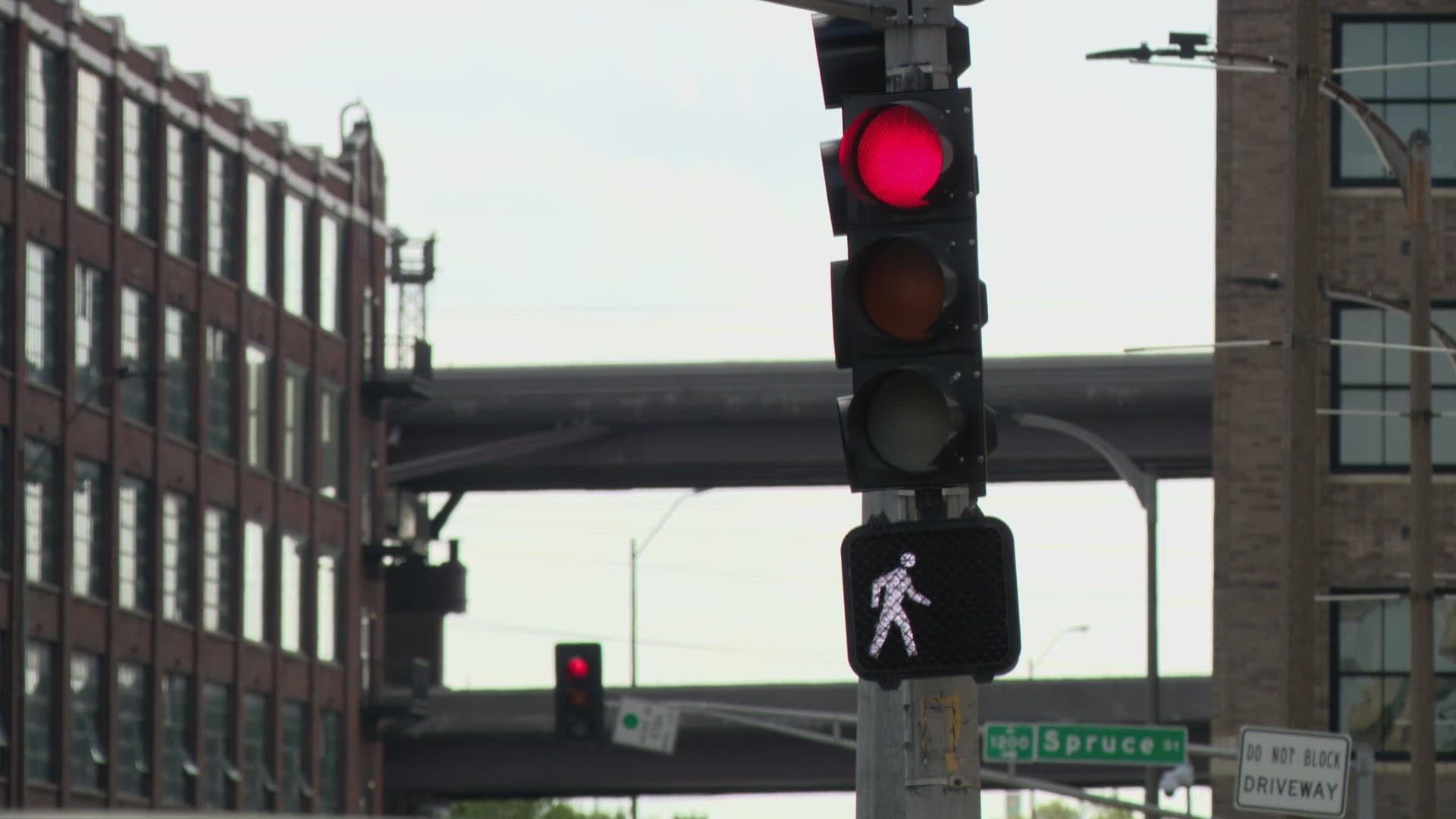ST. LOUIS — St. Louis Alderman Shane Cohn says he was happy when Missouri’s Supreme Court issued a ruling that just about decimated the use of red light and speed cameras – and now, he’s among those leading an effort to return them to city streets using facial recognition technology.
On Monday, Cohn joined St. Louis Mayor Tishaura Jones and Board of Alderman President Megan Green to announce they are introducing a bill that would make the use of automated camera enforcement possible again in the city.
“I am very happy to say that today I have worked with the mayor’s administration, the city counselor’s office and others to try and work within the confines of the Missouri Supreme Court case and the law that's on our books today to ensure that these are constitutional, that they do not violate due process, and we also are introducing companion bills that address surveillance, security, data collection and other components that are important and vital components to our civil liberties here in the City of St. Louis,” he said.
If all goes well through the legislative process and the Board of Aldermen sends the bill to the mayor’s desk to be signed into law, it could take another 10 months before the cameras start targeting red-light runners and speeders, according to the mayor’s office citing a Centers for Disease Prevention and Control study.
The city stopped using the cameras – as did almost every community in Missouri – in 2015 after the state’s Supreme Court determined it was unconstitutional to ticket car owners without being able to prove they were the ones who committed the violations.
The city’s plan will include technology that will make it possible to identify the driver of the vehicle, Cohn said.
The plan also will prevent any revenues collected from tickets from going into the city’s general revenue fund – instead, it will be funneled into a newly created Traffic Safety Improvement Fund, Cohn said.
“That will fund programs devoted towards driver’s education, devoted towards improvement of infrastructure and our neighborhood streets that often see these types of incidents occur with very little physical infrastructure improvements to address the concerns of residents,” Cohn said.
Green said the money that goes into that new fund would be used to make improvements like crosswalk striping, illuminated stop signs and other signage improvements on non-major roads in the city. She said those types of projects often got passed over when it came to funding.
"The idea behind this bill is not to gain revenue," she said. "All of the money collected from red-light and speeding tickets will be used to fund this program, to fund driver's [education] classes or will be distributed into a new fund called the Neighborhood Traffic Safety Improvement Fund to help with further infrastructure improvements."
As for proof that the cameras can improve safety, Jones’ administration included links to two studies from other communities that have used the cameras in its news release.
“Chicago’s red light cameras reduce serious injury crashes at intersections where they are placed and also have a measurable ‘spillover effect’ that improves safety at intersections without cameras,” according to a Northwestern University Transportation Center study released in March 2017.
New York City’s Department of Transportation issued a Speed Enforcement Program Report looking at speed cameras between 2014 and 2016. Cameras during school hours at typical fixed camera locations dropped more than 63%, and injuries at these locations dropped more than 14%.
Other studies conflict.
St. Louis Magazine reported a study out of Houston in 2020 looked at 12 years of geocoded police accident data and concluded, “We find that the cameras changed the composition of accidents but no evidence of a reduction in total accidents or injuries.”
The magazine also reported the National Highway Traffic Safety Administration found “an uptick in rear-end collisions (because folks start hitting the brakes to avoid running a light), but the more dangerous kinds of crashes—i.e., right-angle or “T-bone” crashes—tend to drop when you mount cameras.”
Jones said St. Louis' program would be funded through the American Rescue Plan as part of the city's 'Safer Streets' program that was announced earlier this year.
The bill will be filed Monday afternoon and presented to the St. Louis Board of Aldermen later this week.
If passed, the bill would allow the city to bring red light cameras back to the city, and the city would then have to find a vendor and conduct a study to decide where the cameras should be placed.
The announcement was held at St. Mary's South Side Catholic High School in Cohn's 3rd District. In November, a crash about a block away from the school killed two people and injured four others.
Cohn said crashes like those are why these types of programs are important.
"With capacity limitations that the city faces, it's important that we utilize as many resources at our disposal to be able to curtail the violations that happen throughout our communities and improve the safety of residents, pedestrians, cyclists and others that use our streets and sidewalks every single day," he said.
City leaders in 2019 had discussions about bringing red light cameras back to the city, but those plans never materialized.
Read the draft of the proposed bill filed on Monday below:

